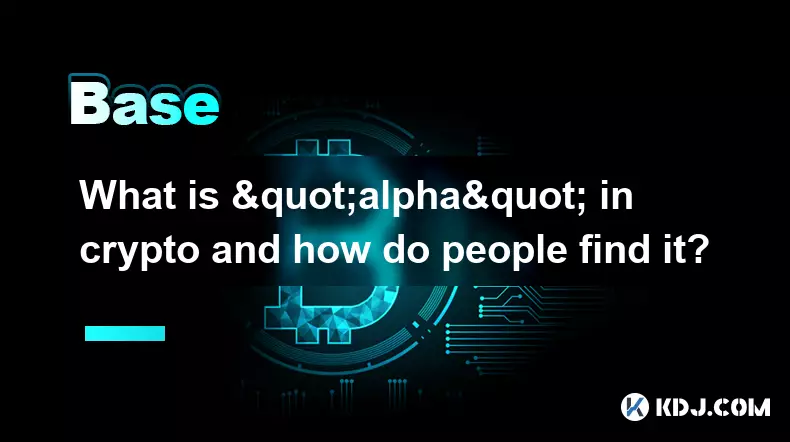-
 bitcoin
bitcoin $102877.190955 USD
1.88% -
 ethereum
ethereum $3430.435064 USD
4.52% -
 tether
tether $0.999264 USD
-0.05% -
 xrp
xrp $2.307310 USD
4.49% -
 bnb
bnb $987.740692 USD
3.82% -
 solana
solana $161.947760 USD
3.97% -
 usd-coin
usd-coin $0.999712 USD
-0.05% -
 tron
tron $0.292810 USD
2.93% -
 dogecoin
dogecoin $0.179738 USD
10.70% -
 cardano
cardano $0.580716 USD
8.75% -
 hyperliquid
hyperliquid $42.463448 USD
8.40% -
 chainlink
chainlink $15.763437 USD
7.05% -
 zcash
zcash $649.595636 USD
17.21% -
 bitcoin-cash
bitcoin-cash $511.610261 USD
7.19% -
 stellar
stellar $0.292537 USD
7.91%
How does public key cryptography work and how does it secure your wallet?
Public key cryptography secures blockchain transactions by using paired keys—private for signing, public for verification—ensuring ownership without revealing sensitive data.
Nov 08, 2025 at 11:00 pm

Understanding Public Key Cryptography in Blockchain
1. Public key cryptography forms the foundation of security in cryptocurrency wallets. It operates using a pair of mathematically linked keys: one public and one private. The public key can be shared openly, while the private key must remain confidential to its owner.
2. When a user initiates a transaction, they sign it with their private key. This digital signature proves ownership without revealing the private key itself. Other participants in the network use the sender’s public key to verify that the signature is valid and matches the associated address.
3. The cryptographic algorithms used, such as Elliptic Curve Digital Signature Algorithm (ECDSA), ensure that deriving the private key from the public key is computationally infeasible. This asymmetry protects users even when public keys are widely distributed across the blockchain.
4. Each wallet address is typically a hashed version of the public key. This adds another layer of obfuscation, making it extremely difficult to reverse-engineer any sensitive information from the visible address on the blockchain.
5. Because no central authority issues or controls these keys, users have full autonomy over their funds. Security depends entirely on how well the private key is protected from unauthorized access.
How Wallets Utilize Cryptographic Keys
1. Upon creating a cryptocurrency wallet, a random private key is generated, often through a cryptographically secure random number generator. From this key, the corresponding public key is derived using elliptic curve multiplication.
2. The wallet then applies hashing functions like SHA-256 and RIPEMD-160 to the public key to generate a readable wallet address. This address is what others use to send funds to the wallet holder.
3. When sending cryptocurrency, the wallet software constructs a transaction message containing inputs, outputs, and metadata. It then signs this message with the private key, embedding the digital signature into the transaction data.
4. Nodes on the network validate the transaction by checking the signature against the public key and confirming it corresponds to the source address. If verification fails, the transaction is rejected immediately.
5. Since each transaction is permanently recorded on the blockchain, the integrity of past transactions relies on the unforgeable nature of digital signatures made possible by public key cryptography.
Security Implications for Users
1. The private key is the sole proof of ownership for any cryptocurrency balance linked to an address. Losing access to it means losing access to the funds permanently, with no recovery mechanism.
2. If a private key is exposed—through malware, phishing, or insecure storage—an attacker can sign transactions and drain the wallet without leaving a trace other than the transaction itself.
3. Hardware wallets enhance security by storing private keys offline and requiring physical confirmation for signing transactions. This prevents remote attacks even if the connected device is compromised.
4. Seed phrases, usually consisting of 12 or 24 words, encode the master private key in a human-readable format. They allow wallet restoration but must be kept physically secure, as anyone with the seed can regenerate all associated private keys.
5. Reusing wallet addresses increases tracking risks, though it doesn’t compromise cryptographic security. Best practices recommend generating new addresses for receiving funds to improve privacy.
Frequently Asked Questions
Can someone guess my private key?While theoretically possible, the number of possible private keys is so vast—on the order of 2^256—that guessing the correct one is practically impossible, even with the most powerful computers available today.
Is public key cryptography used in all blockchains?Yes, virtually every major blockchain network, including Bitcoin, Ethereum, and Litecoin, relies on public key cryptography for authentication and transaction signing. Variations exist in implementation, but the core principles remain consistent.
What happens if two people generate the same private key?The probability of generating identical private keys is astronomically low due to the randomness and size of the key space. If it did occur, both individuals could access the same funds, but such collisions are not considered feasible in practice.
Can quantum computers break public key cryptography?Future quantum computers may pose a threat to current cryptographic schemes like ECDSA by efficiently solving the mathematical problems they rely on. However, no functional quantum computer capable of doing so exists yet, and post-quantum cryptographic research is already underway in the crypto community.
Disclaimer:info@kdj.com
The information provided is not trading advice. kdj.com does not assume any responsibility for any investments made based on the information provided in this article. Cryptocurrencies are highly volatile and it is highly recommended that you invest with caution after thorough research!
If you believe that the content used on this website infringes your copyright, please contact us immediately (info@kdj.com) and we will delete it promptly.
- Ripple (XRP) in 2026: Hold or Fold? A Look at XRP's Future and Emerging DeFi Alternatives
- 2025-11-08 18:35:01
- Zcash ZEC Coin Price Explosion: From Privacy Niche to Center Stage
- 2025-11-08 18:55:01
- Berachain Price Prediction: Navigating the Honeycomb Hype in Crypto
- 2025-11-08 18:55:01
- Arthur Hayes, Gold, and Bitcoin: A Modern Monetary Trinity?
- 2025-11-08 19:15:01
- Shiba Inu's Next Move: Navigating a Shifting Market
- 2025-11-08 19:20:01
- Pakistan's Crypto Crossroads: Balancing Opportunity with Asset-Backed Realities
- 2025-11-08 19:20:01
Related knowledge

How does a crypto insurance protocol work?
Nov 08,2025 at 12:39am
Understanding Crypto Insurance Protocols1. A crypto insurance protocol operates by offering financial protection against losses incurred from digital ...

What is an "exploit" versus a "hack" in the context of smart contracts?
Nov 09,2025 at 12:40am
Understanding Exploits in Smart Contracts1. An exploit refers to the utilization of a known vulnerability within a smart contract’s code to gain unint...

What is a decentralized storage network and how does it compare to cloud services?
Nov 07,2025 at 11:59pm
Understanding Decentralized Storage Networks1. A decentralized storage network distributes data across a peer-to-peer infrastructure rather than relyi...

What is a factory contract and how is it used to deploy other contracts?
Nov 08,2025 at 04:20am
Understanding Factory Contracts in Blockchain Development1. A factory contract is a smart contract designed to create and deploy other smart contracts...

What is "alpha" in crypto and how do people find it?
Nov 08,2025 at 06:19pm
Understanding Alpha in the Cryptocurrency Space1. In the context of cryptocurrency, 'alpha' refers to valuable, non-public information or insights tha...

What is a "capital efficiency" in DeFi and how is it improved?
Nov 09,2025 at 01:40am
Understanding Capital Efficiency in DeFi1. Capital efficiency in decentralized finance (DeFi) refers to the ability of financial protocols and systems...

How does a crypto insurance protocol work?
Nov 08,2025 at 12:39am
Understanding Crypto Insurance Protocols1. A crypto insurance protocol operates by offering financial protection against losses incurred from digital ...

What is an "exploit" versus a "hack" in the context of smart contracts?
Nov 09,2025 at 12:40am
Understanding Exploits in Smart Contracts1. An exploit refers to the utilization of a known vulnerability within a smart contract’s code to gain unint...

What is a decentralized storage network and how does it compare to cloud services?
Nov 07,2025 at 11:59pm
Understanding Decentralized Storage Networks1. A decentralized storage network distributes data across a peer-to-peer infrastructure rather than relyi...

What is a factory contract and how is it used to deploy other contracts?
Nov 08,2025 at 04:20am
Understanding Factory Contracts in Blockchain Development1. A factory contract is a smart contract designed to create and deploy other smart contracts...

What is "alpha" in crypto and how do people find it?
Nov 08,2025 at 06:19pm
Understanding Alpha in the Cryptocurrency Space1. In the context of cryptocurrency, 'alpha' refers to valuable, non-public information or insights tha...

What is a "capital efficiency" in DeFi and how is it improved?
Nov 09,2025 at 01:40am
Understanding Capital Efficiency in DeFi1. Capital efficiency in decentralized finance (DeFi) refers to the ability of financial protocols and systems...
See all articles





















![The Graph Price Prediction [GRT Crypto Price News Today] The Graph Price Prediction [GRT Crypto Price News Today]](/uploads/2025/11/07/cryptocurrencies-news/videos/690d4df44fe69_image_500_375.webp)



















































